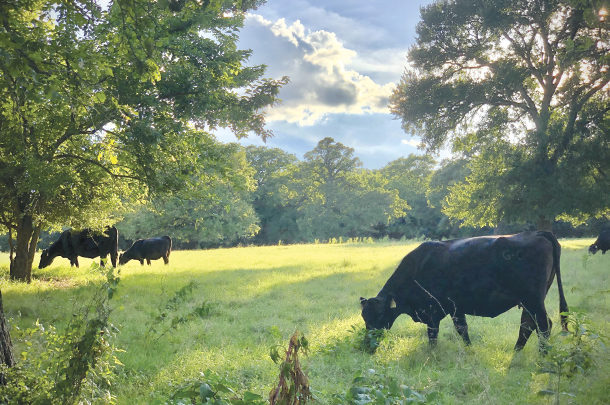Drought is a recurring phenomenon, and forage growers as well as other agricultural producers need to stay prepared for it. At the current time, meteorologists don’t have the ability to accurately predict drought for more than one to two months in advance for most parts of the world. Predicting drought depends on the ability to provide long-term temperature and precipitation forecasts that constantly change.
In the National Drought Mitigation Center (NDMC), University of Nebraska publication titled “Managing Drought Risk on the Ranch – A Planning Guide for Great Plains Ranchers,” drought is defined as too little soil moisture to meet requirements of dominant forage species during their rapid growth windows. Producers who increase their management flexibility and maximize soil health and perennial forage production are likely to minimize painful decisions with limited resources during drought. The longer decisions are delayed, the fewer available options.
Large financial drains are avoided through preparation and execution of a drought mitigation plan as part of the overall business management plan. The first step listed in the NDMC pamphlet “Managing Drought Risk on the Ranch” is to form a planning team. Suitable participants include family members, bankers, forage specialists and financial consultants. Drought plans usually have a higher degree of completeness and are more applicable when developed with input from different perspectives.
Critical dates and target conditions
The drought mitigation plan should identify critical dates and target conditions for taking actions. Monitor precipitation monthly and determine what percentage of normal rainfall requires changes in management practices, such as altering forage harvest dates or reducing stocking rates on grazing land.
Forage availability requires continual monitoring to ensure it is sufficient to meet animal needs. The amount of residual vegetation remaining after harvest or grazing is important for reducing runoff and increasing soil absorption when it does rain. To measure long-term drought, range condition is evaluated on native rangeland every few years. Range condition is the current status of rangeland compared to that expected in climax vegetation.
According to the NDMC publication, critical dates are often based upon midpoints of rapid growth windows for dominant grass species. The USDA National Resources Conservation Service (NRCS), state extension personnel and private consultant range specialists offer assistance in identifying the earliest possible indicators of pending forage deficits. Some possible indicators are soil moisture, last year’s precipitation and plant growth, precipitation in recent months and current standing and residual forage.
Critical dates are earlier for cool-season forages compared to warm-season species. Most rangelands contain mixtures of cool- and warm-season species, so it is necessary to select two critical dates – one for each growing season. This will allow evaluation of each component’s contribution to the total forage production.
“In preparing for drought, some practices of the overall operation may need consideration or refinement,” says Dr. Monte Rouquette Jr., Texas A&M AgriLife Research. “Soil tests to determine fertilizer needs are the best investment for efficient and effective forage production when sufficient moisture is available. Fertilizer applications during drought usually don’t return dividends. Select forage species adapted to the soil type and topography of the field or pasture.” Soil type and topography information is available online (Web Soil Survey).
“Identification of plant species and observation of overall pasture or field condition with respect to forage density and extent of weed invasion are good measures of drought effects. In relation to pastures, forage species within a climatic zone determines the overall stocking conditions for the property,” Rouquette says. “Success of pasture and rangeland is dependent on knowing what to look for to make strategic management decisions. The most useful conditions to monitor include forage height, pattern of selective grazing and animal body condition. Forage height is a direct indicator of available dry matter for grazing or haying. Pattern of grazing is based primarily on forage species palatability and stocking rate. Forage density and ground cover are essential for soil-pasture sustainability.”
Maintain financial health
Planning for drought can help maintain financial health during the dry period. The NDMC publication titled “Managing Drought Risk on the Ranch – A Planning Guide for Great Plains Ranchers” lists liquidity and solvency as two common measurements of financial health. One of the measures of liquidity is net cash flow, calculated by subtracting annual cash outflow from inflow. A large positive difference indicates that there is not a problem. Small positive differences are a signal to exercise caution. If there is a large negative difference, you have a problem which needs immediate action.

Solvency is measured by the debt-to-asset ratio and net worth. The debt-to-asset ratio is calculated by dividing amount of debt by value of assets. Anything that has value and is available for paying debts is considered an asset. If the debt-to-asset ratio is less than 40%, there is not a problem. A debt-to-asset ratio of 40% to 60% signals caution, and there is a serious problem if it is over 60%.
Net worth is total asset value minus total liabilities. Large net worth is healthy, moderate net worth indicates a need for caution, and small net worth is a serious problem. A large positive change from one year to the next is good, a small change requires caution, and a large negative change creates a serious financial problem.
Creation of a drought plan requires study of available references and organizing the information to fit individual needs. A planning team of experts can also offer valuable input.
The two references quoted in this article offer a place to begin and are found at:













